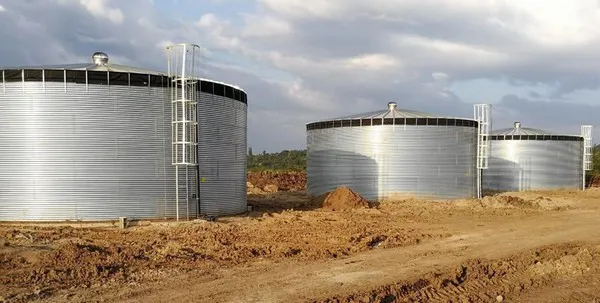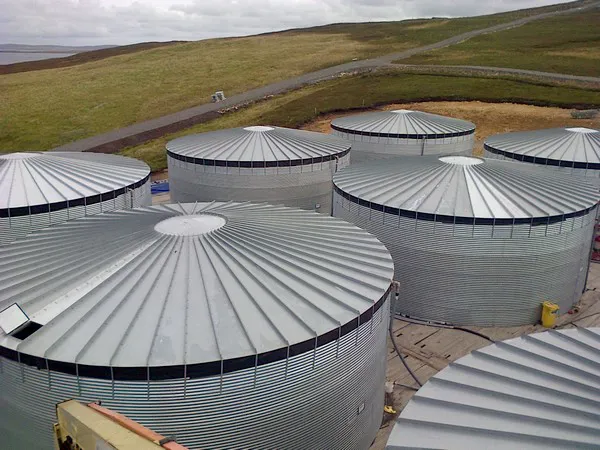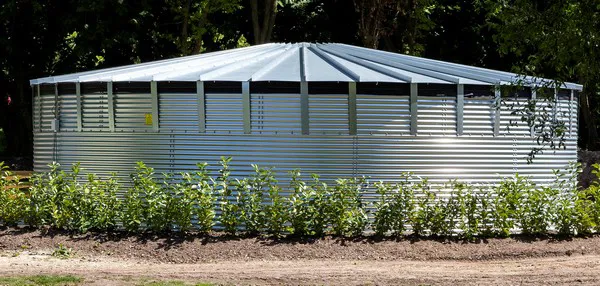The floating tarpaulins used in Dutch water silos are sufficient for now. However, there's a growing demand for steel roofs for these silos. Bas van der Elst of Hendic, says, "Steel is solid. It can take a beating. Then storms aren't a problem. And if there's a lot of snow, also, no problem." Wind and snow are often risk factors for water storage. Steel seems to be the solution.

A steel roof has the added advantage that the water's entirely sealed off. With a floating tarpaulin, anything can still fall into it. Covering the silo is a better idea. "Safety first," says Bas. Covering a water silo also prevents algae growth and evaporation.

"In both Russia and Asia, stored water storage quality is receiving more attention," adds Bas. Hendic has seen an increasing demand for its steel roofs. These roofs are made of S600 steel and have a 450-micron galvanization. So, they're very highly corrosion-resistant. The roof can also be fully coated in any RAL color.
This model's maximum roof diameter is 14.64. The covers are designed for various water silo brands. The silos don't need extra reinforcement either. The solid steel center post carries most of the roof's weight. In most cases, it can simply be placed on the silo's liner, using a base plate.

For more information: Hendic
Hendic
Bas van der Elst
Tel: + 31 (0) 610 705 739
Email: [email protected]
Website: www.hendic.nl
